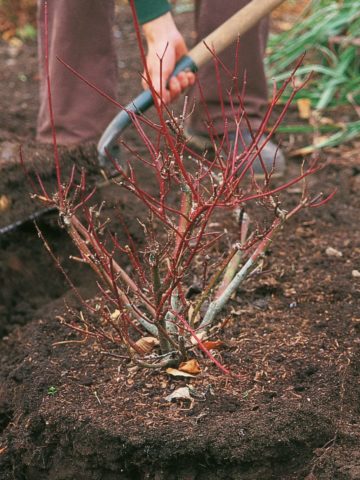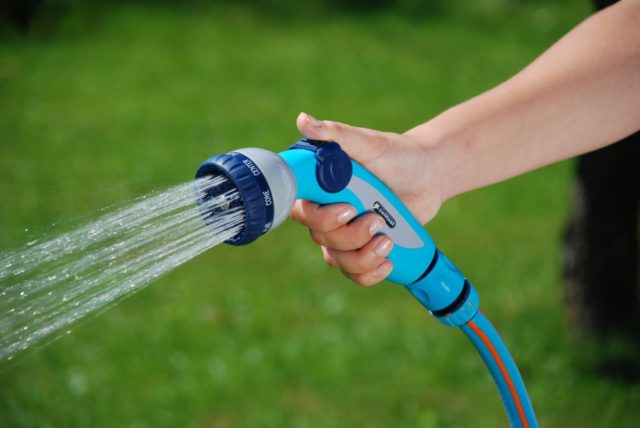Content
Like all plants, hydrangea does not like any interference. Therefore, if a hydrangea transplant in the spring to another place is still necessary, it must be done carefully. Violation of the rules of the procedure entails, at best, a difficult acclimatization process, and at worst - the death of the bush.
Is it possible to transplant hydrangea in spring
Experts assure that it is better to perform a hydrangea transplant in September. The plants planted during this period have time to take root and gain strength before the onset of frost, and by spring they will be ready to please the summer resident with flowering.
The disadvantages of the spring transplant include the fact that the plant after the procedure will restore the root system and get used to new conditions. As a result, he will no longer have any strength left for a set of buds. Therefore, right after the spring transplant, it is better for the gardener not to rely on rapid flowering. It will only be possible in a year.
In addition, spring planting is dangerous due to the attack of late frosts. In this case, the frozen soil can freeze the fragile roots of the hydrangea. Depending on the degree of hypothermia, the death of the plant or the lengthening of the acclimatization period can be achieved.
And yet, if there is a need to transplant hydrangea in a tree-like spring to another place, the procedure can be performed. In order for the bush to take root in a new place after transplantation, it is important to take into account the peculiarities of agricultural technology and follow useful recommendations. Then even a novice gardener will be able to avoid problems.

Experts advise replanting the hydrangea in the fall, however, in case of urgent need, the procedure can be carried out in the spring.
Why you need to transplant hydrangea in the spring
There are many reasons why you might need to transplant your hydrangea in the spring. The most common ones are:
- Hydrangea grows in the wrong place. It is located on the aisle and interferes with free movement or is in strong shade, which negatively affects its growth and development.
- Depletion of the land. Hydrangea should grow in one place for no more than 10 years. However, it is best to transplant every 5 years.
- The need to move a young, recently propagated plant from an old bush to a permanent place.
When to transplant hydrangea in spring
It is necessary to start transplanting hydrangeas in the spring after the end of the frost, when the ground begins to thaw and the snow completely melts. It is important to perform the procedure before the buds begin to bloom, and active sap flow appears. Then the root system will suffer minimally during transplantation.
How to transplant hydrangea in spring
Transplanting hydrangeas in the spring requires a serious approach from the summer resident. An improperly performed procedure can cause enormous harm.
Correct transplanting in the spring implies not only the correct choice of place and time, but also the preliminary preparation of the pit and soil. It is important not to forget that hydrangeas are very sensitive to violations of agricultural technology.
Selection and preparation of the landing site
Experts advise choosing a quiet place protected from strong winds for transplanting hydrangeas in spring. Drafts can cause hypothermia, which can adversely affect growth and development.
Although hydrangea is considered a shade plant, it will not bloom without the sun. Ideally, the location should be such that it is only illuminated before or after lunch, and at noon it is protected from the scorching sun.
Hydrangea loves fertile, slightly acidic soil. If you transplant into calcareous or alkaline soil, then in the future the plant will not bloom profusely and for a long time, and its buds will be pale and inconspicuous. Therefore, it is important to measure the acidity of the soil before planting.
Swampy and overly humid areas will also not work. When transplanting hydrangeas in the spring, it should not be allowed that the distance between the fence or any structure and the bush is at least 1.5 m.Otherwise, the root of the bush may freeze in winter.
The pit is prepared several months before the transplant. It is half covered with a mixture, which includes black soil, peat, deciduous humus and sand. These ingredients are mixed in equal proportions. Then 25 g of superphosphate and 25 g of potassium sulfate are added to 1 cubic meter of the mixture. The size of the transplant pit should directly depend on the age of the hydrangea and the size of its root system. Usually, for bushes under 3 years old, pits are made 50 cm in size.3, for plants aged 3-5 years - 1 m3, and over 5 years old - 1.5 m3.

The seat should be selected and prepared in advance
Preparing hydrangea for transplant
In order for the bush to take root better after transplantation, it is prepared in advance. They do it this way: in summer or autumn, a circular trench is made around the crown with a depth and width of about 25 cm. It is filled with loose humus and sprinkled with ordinary earth on top. By the time of transplanting, the bush will take root into the organic layer. Also, before transplanting the plant, pruning is carried out in the spring: strongly thickening, diseased and dry branches are removed.
Rules for transplanting hydrangea in spring
Regardless of when the transplant takes place, in the fall or spring, the procedure is performed in this order:
- A day before the procedure, the prepared pit is watered. This requires 15-20 liters of water. If it rains recently, this moment is missed.
- Pebbles, broken brick, etc. are laid out at the bottom of the pit. This material will play the role of drainage and prevent decay of the root system.
- The branches are tied with a cord so that they do not interfere.
- On the outside of the trench, the plant is carefully dug in. They try to do this so as not to damage the root system.
- The plant is taken out together with an earthen lump. The earth is not knocked down.
- The bush is placed in a prepared hole and sprinkled with soil, tamped.
- Mulching is performed. Sawdust or tree bark is used as mulch. This is to ensure that the liquid does not evaporate too quickly.
- Install the support. It is needed so that the bush, weakened after transplanting in the spring, does not fall. They remove it after the final rooting of the culture.
How to feed hydrangea in spring after transplant
Immediately after transplanting, hydrangea is not fertilized in the spring. For the first time, she has enough nutrients from the earthen mixture. In addition, excess fertilizer can cause shoots to grow too early.
If the hydrangea began to release the first young leaves, then the procedure was successful and the plant has adapted. At this time, the first fertilizers can be applied. Usually organics are used for this (for example, mullein). Universal preparations for garden plants are also well suited. Hydrangea reacts well to ammonium and potassium sulfate.
Care after landing
In order for the bush to grow and develop well after transplanting a hydrangea in a panicle spring, it must be properly looked after. It is watered twice a week. This consumes about 15 liters of water. Only soft, settled water is suitable for irrigation.If it's too tough, you can add a little lemon juice or apple cider vinegar to it. Rainwater collected during precipitation is ideal for these purposes. The liquid should be at room temperature, therefore, if necessary, it is heated. It is especially important not to allow the soil to dry out in the first half month after planting. In case of frequent precipitation, the frequency of soil moistening is reduced.
When weeds appear, they immediately try to remove them. Grass draws moisture and nutrients from the ground, which is especially bad for young seedlings. In addition, viruses and bacteria, insect pests actively multiply in the grass. This greatly increases the risk of disease.

Bushes that have undergone a transplant are especially in need of care.
To facilitate the access of oxygen to the roots, the soil is regularly loosened to a depth of about 15 mm. The procedure is repeated every time after watering.
The bush must be prepared for winter. For insulation, peat, dry foliage, straw and sawdust are poured under it. The thickness of this layer should be about 20 cm. The branches are tied with rope and wrapped in burlap or spunbond. When growing a crop in a cold region, it is additionally covered with snow in winter so that a snowdrift is formed above it.
Conclusion
If you follow the simple agrotechnical rules, then the hydrangea transplant in the spring to another place will be transferred as easily as possible. After that, the bush will grow up well and take root over the summer, and the next year it will delight you with exuberant flowering. And in order to adapt to the new environment as easily as possible, you should take a responsible approach to further care.








